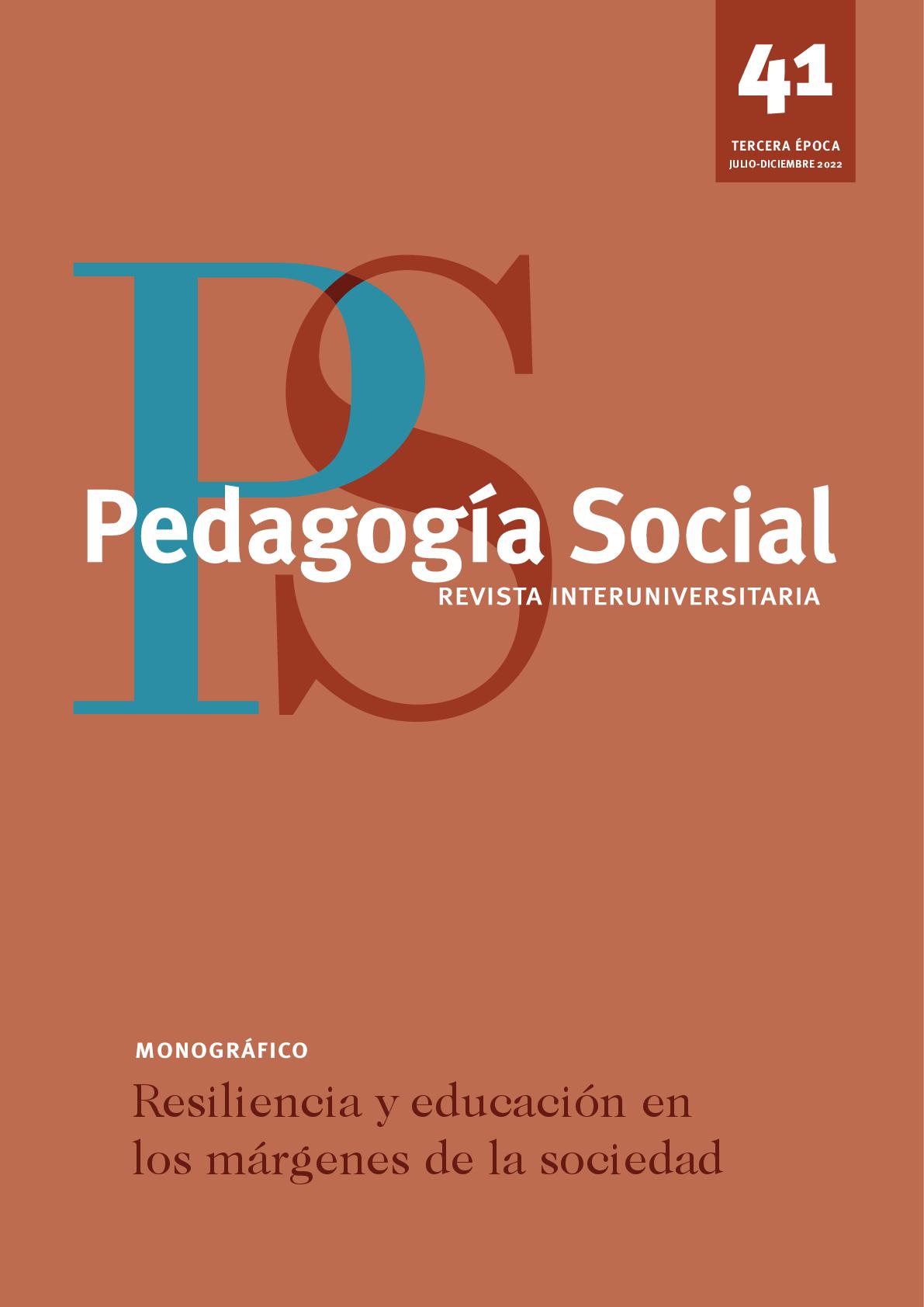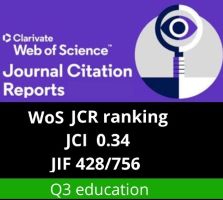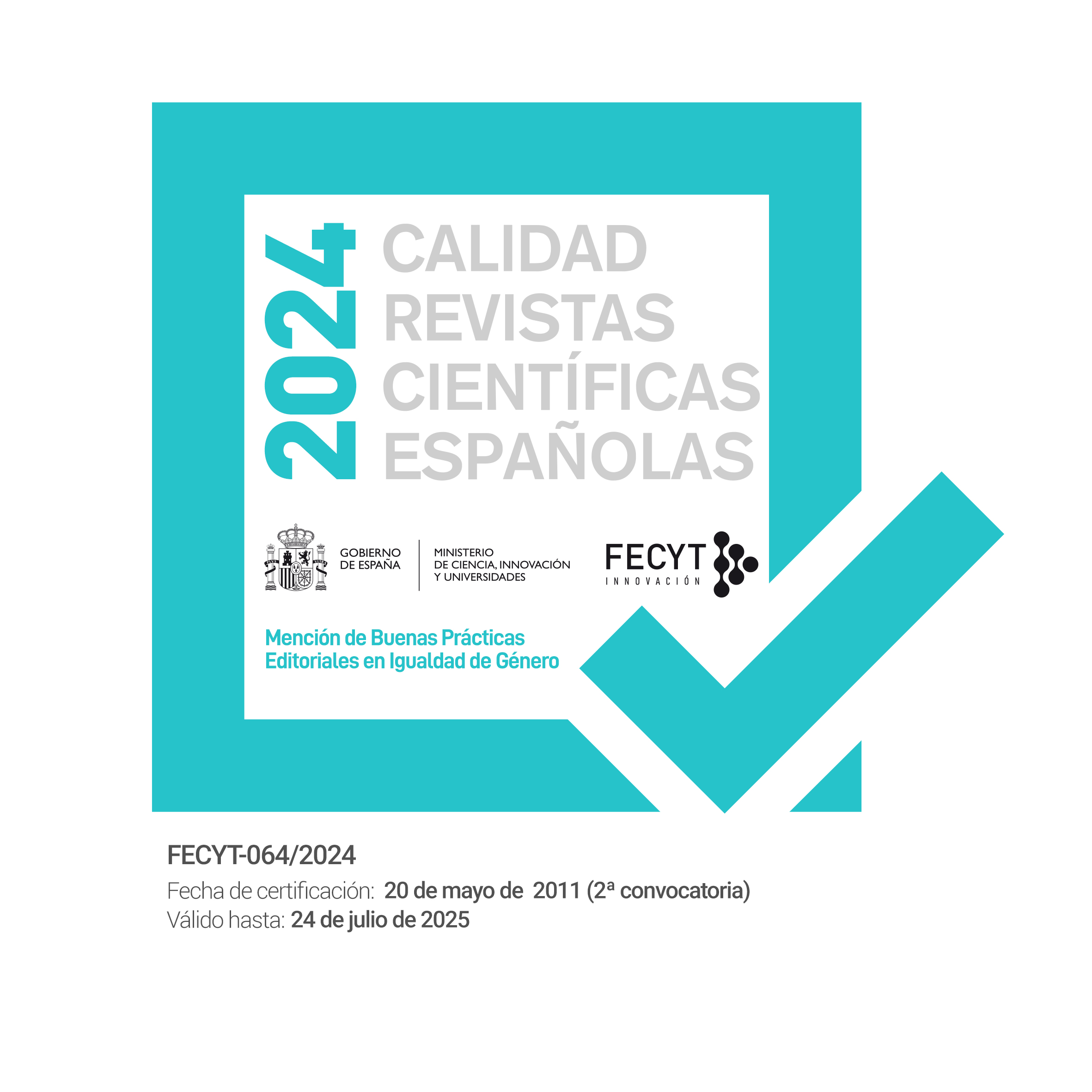Livinglabs como modelos de innovación abierta. Análisis a partir del concepto de extitución
DOI:
https://doi.org/10.7179/PSRI_2022.41.11Palabras clave:
Dispositivo de captura, Instituciones, Internet, Métodos virtuales, Sociología de la TraducciónResumen
La innovación abierta es una forma de organizar los procesos de innovación y
desarrollo (I+D) que se ha popularizado recientemente. La distancia que el modelo de la innovación abierta pretende establecer con respecto a la innovación cerrada es un lugar común
en gran cantidad de publicaciones. Sin embargo, diversos trabajos la ponen en duda. En este artículo proponemos una lectura crítica de la innovación abierta a la luz del concepto de “extitución”. Con ayuda de esta noción describimos la forma como determinadas organizaciones
definen su “ambiente de innovación” y los “actores externos” a los que pretenden articular a los procesos de I+D. Los casos de estudio son los laboratorios vivos en España que se dedican al sector de la salud y el bienestar. El material se recolectó utilizando métodos virtuales y
se analizó utilizando un enfoque inspirado en la Sociología de la Traducción. Los resultados dan cuenta de una persistente invitación a establecer relaciones fuertes con el laboratorio, a través de un conjunto de esfuerzos de problematización, interesamiento y enrolamiento,
mediante las cuales estos se relacionan con su exterioridad. A partir de estos resultados, se discute el carácter extitucional de los laboratorios vivos en el contexto de la gerontecnología
educativa.
Descargas
Citas
Aceros, J. C., & Domènech, M. (2010). La mancomunidad de política hidrológica española. Sectores y trayectorias políticas en Internet. Revista Española de Investigaciones Sociológicas, (132), 11–34.
Aceros, J. C., & Domènech, M. (2011). The ‘New Water Culture’ on the Web: an issue network analysis. Regional Environmental Change, 11(4), 963–973.
Aka, K. G. (2019). Actor-network theory to understand, track and succeed in a sustainable innovation development process. Journal of Cleaner Production, 225, 524–540. https://doi.org/10.1016/j.jclepro.2019.03.351
Almirall, E., Lee, M., & Majchrzak, A. (2014). Open innovation requires integrated competition-community ecosystems: Lessons learned from civic open innovation. Business Horizons, 57(3), 391–400. https://doi.org/10.1016/j.bushor.2013.12.009
Álvarez-Aros, E. L., & Bernal-Torres, C. A. (2017). Modelo de Innovación Abierta: Énfasis en el Potencial Humano. Informacion Tecnologica, 28(1), 65–76. https://doi.org/10.4067/S0718-07642017000100007
Angelini, L., Carrino, S., Abou Khaled, O., Riva-Mossman, S., & Mugellini, E. (2016). Senior Living Lab: an ecological approach to foster social innovation in an ageing society. Future Internet, 8(4). https://doi.org/10.3390/fi8040050
Aylen, J. (2010). Open versus closed innovation: Development of the wide strip mill for steel in the United States during the 1920s. R&D Management, 40(1), 67–80. https://doi.org/10.1111/j.1467-9310.2009.00576.x
Bergvall-Kåreborn, B., Ihlström Eriksson, C., & Ståhlbröst, A. (2015). Places and spaces within Living Labs. Technology Innovation Management Review, 5(12). https://doi.org/10.22215/timreview951
Bilandzic, A., Foth, M., & Hearn, G. (2019). The role of Fab Labs and Living Labs for economic development of regional Australia . In A. van Luyn & E. de la Fuente (Eds.), Regional Cultures, Economies, and Creativity. London: Routledge.
Bravo-Ibarra, E. R. (2020). Revisión sistemática del concepto de laboratorios vivos. Dimensión Empresarial, 12(1), 78–104.
Callon, M. (1980). Struggles and Negotiations to Define What Is Problematic and What Is Not : the Socio-Logics of Translation. In K. Knorr, R. Krohn, & R. Whitley (Eds.), The Social Process of Scientific Investigation (pp. 197–220). Dordrecht: Reidel.
Callon, M. (1984). Some Elements of a Sociology of Translation: Domestication of the Scallops and the Fishermen of St Brieuc Bay. The Sociological Review, 32(1), 196–233. https://doi.org/10.1111/j.1467-954x.1984.tb00113.x
Callon, M. (1987). Society in the making: The study of technology as a tool for sociological analysis. In W. E. Bijker, T. P. Hugues, & T. J. Pinch (Eds.), The social construction of technological systems: New directions in the sociology and history of technology (pp. 83–103). Cambridge: MIT Press.
Callon, M., Lascoumes, P., & Barthe, Y. (2009). Acting in an uncertain world. An essay on technical democracy. London:The MIT Press.
Callon, M., & Law, J. (1982). On interests and their transformation: Enrolment and counter-enrolment. Social Studies of Science, 12(4), 615–625.
Callon, M., & Rabeharisoa, V. (2003). Research “‘in the wild’” and the shaping of new social identities. Technology in Society, 25, 193–204.
Capdevila, I. (2019). Joining a collaborative space: is it really a better place to work? Journal of Business Strategy, 40(2), 14–21. https://doi.org/10.1108/JBS-09-2017-0140
Chesborough, H. W. (2003). Open Innovation: The New Imperative for Creating and Profiting from Technology. Boston, MA: Harvard Bussiness School Press.
Chesbrough, H. W., Vanhaverbeke, W., & West, J. (2006). Open Innovation: Researching a New Paradigm. Oxford:Oxford University Press.
Choi, B. K., Yeo, W. D., & Won, D. K. (2018). The implication of ANT (Actor-Network-Theory) methodology for R&D policyin open innovation paradigm. Knowledge Management Research and Practice, 16(3), 315–326. https://doi.org/10.1080/14778238.2018.1471329
Collet-Sabé, J. (2013). From total institution to extitution? Discussions on the future of monastic life in the Benedictine women’s monasteries of Catalonia (Spain). Revista Internacional de Sociología, 71(2), 335–356. https://doi.org/10.3989/ris.2011.05.11
Coorevits, L., & Jacobs, A. (2017). Taking real-life seriously: An approach to decomposing context beyond “environment” in living labs. Technology Innovation Management Review, 7(1), 26–36.
Dahlander, L., & Gann, D. M. (2010). How open is innovation? Research Policy, 39(6), 699–709. https://doi.org/10.1016/j.respol.2010.01.013
de Magdala Pinto, M., & Pedruzzi Fonseca, L. (2013). Profundizando la comprensión de los Living Labs de Brasil. Revista Iberoamericana de Ciencia, Tecnología y Sociedad, 8(23), 231–247.
Domènech, M., & Tirado, F. (1998). Sociología Simétrica: ensayos sobre ciencia, tecnología y sociedad. Barcelona: Gedisa.
Fenwick, T., & Edwards, R. (2010). Actor–Network Theory in Education. Oxon: Routledge.
Følstad, A. (2008). Living labs for innovation and development of information and communication technology: a literature review. Electronic Journal of Organizational Virtualness, 10, 99–131.
Foucault, M. (1977). Discipline and punish. The birth of the prison. New York: Pantheon.
Goffman, E. (1961). Asylums (Anchor Books & Doubleday & Co., Eds.). New York.
González-Sánchez, R., & García-Muiña, F. E. (2011). Innovación abierta: Un modelo preliminar desde la gestión del conocimiento. Intangible Capital, 7(1), 82–115. https://doi.org/10.3926/ic.2011.v7n1.p82-115
Hancke, E., & Larsen, E. (2019). The problem of innovation. Copenhagen.
Hennion, A. (2015). The passion for music. A sociology of mediation. Farnham: Ashgate.
Hetland, P. (2011). Science 2.0: Bridging science and the public. Nordic Journal of Digital Literacy, 6, 326–339.
Hetland, P., & Mørch, A. I. (2016). Ethnography for Investigating the Internet. Seminar.Net, 12(1), 1–14.
Hine, C. (2005). Virtual Methods. United Kingdom: Berg.
Huizingh, E. K. R. E. (2011). Open innovation: State of the art and future perspectives. Technovation, 31(1), 2–9. https://doi.org/10.1016/j.technovation.2010.10.002
Jasanoff, S. (2003). Technologies of humility: citizen participation in governing science. Minerva, 41(3), 223–244.
Latour, B. (1983). Give me a laboratory and I will raise the world. In K. Knorr-Cetina & M. Mulkay (Eds.), Science observed: Perspectives on the social study of science (pp. 141–170). London: Sage.
Latour, B. (1992). Where are the missing masses? Sociology of a few mundane artifacts. In W. Bijker & J. Law (Eds.), Shaping Technology/Building Society. Studies in Sociotechnical Change (pp. 225–258). London: MIT Press.
Latour, B. (1996). Aramis of the love of technology. Cambridge, MA: Harvard University Press.
Latour, B. (1998). De la mediación técnica: Filosofía, sociología, genealogía. In M. Domènech & F. Tirado (Eds.), Sociología simétrica (pp. 249–302). Barcelona: Gedisa.
Latour, B. (2005). Reassembling the Social. An Introduction to Actor-Network-Theory. New York: Oxford University Press.
Latour, B. (2017). Lecciones de sociología de las ciencias. Barcelona: Arpa.
Latour, B., & Woolgar, S. (1995). La vida en el laboratorio. La construcción de los hechos científicos. Madrid: Alianza.
Law, J. (2008). Actor-network theory and material semiotics. In B. S. Turner (Ed.), The new Blackwell Companion to social theory (pp. 141–158). London: Blackwell.
Law, J., & Hassard, J. (1999). Actor Network Theory and after. Oxford: Blackwell.
Leminen, S., Rajahonka, M., & Westerlund, M. (2017). Towards third-generation living lab networks in cities. Technology Innovation Management Review, 7(11), 21–35. https://doi.org/10.22215/timreview/1118
Lezaun, J. (2017). Actor-Network Theory. In C. Benzecry, M. Krause, & I. Reed (Eds.), Social theory now. The University of Chicago Press.
Marone, L., Onofrio, R., & Masella, C. (2020). The Italian case of Lecco Innovation Living Lab: stakeholders’ needs and activities to contribute to the technological innovation process in healthcare. Sustainability, 12(24). https://doi.org/10.3390/su122410266
Marres, N. (2002). May the victim of defacement stand up! On reading the network configurations of scandal on the Web. In B. Latour & P. Weibel (Eds.), Iconoclash: Beyond the Image Wars in Science, Religion and Art (pp. 486–489). Cambridge, MA: MIT Press.
Martín-García, A. V., Gutiérrez-Pérez, B. M., & Aceros, J. C. (2021). Living Senior Labs, ecosistemas de co-creación e innovación abierta con personas mayores: revisión sistemática de la literatura en Ciencias Sociales. Interface, 25, e210399.
Masseck, T. (2017). Living Labs in architecture as innovation arenas within higher education institutions. Energy Procedia, 115, 383–389. https://doi.org/10.1016/j.egypro.2017.05.035
Mendiola, I. (2016). El dispositivo de la captura: Espacios y cuerpos bajo el signo de la excepcionalidad. Athenea Digital,16(1), 83–111.
Michael, M. (2017). Actor Network-Theory. Trials, trails and translations. London: Sage.
Osorio, F., Dupont, L., Camargo, M., Palominos, P., Peña, J. I., & Alfaro, M. (2019). Design and management of innovation laboratories: Toward a performance assessment tool. Creativity and Innovation Management, 28(1), 82–100. https://doi.org/10.1111/caim.12301
Ramírez, M.-S., & García-Peñalvo, F.-J. (2018). Co-creación e innovación abierta : Revisión sistemática de literatura. Comunicar, 54, 9–18. https://doi.org/10.3916/C54-2018-01
Serres, M. (1994). El nacimiento de la física en el texto de Lucrecio. Valencia: Pre-textos.
Spicer, A. (2010). Extitutions: The other side of institutions . Ephemera, 10(1), 25–39.
Tirado, F., & Domènech, M. (2001). Extituciones: El poder y sus anatomías. Política y Sociedad, 36(2), 191–204.
Tirado, F., & López, D. (2012). Teoría del Actor-Red. Más allá de los estudios de ciencia y tecnología. Barcelona: Amentia.
Tirado, F., & Maureira, M. (2016). De Objetos y Extituciones: nuevos operadores de lo social . Oxímora, 8, 112–130.
Tirado, F., & Mora, M. (2004). Cyborgs y extituciones. Nuevas formas para lo social. México: Universidad de Guadalajara.
Trott, P., & Hartmann, D. (2009). Why “open innovation” is old wine in new bottles. International Journal of Innovation Management, 13(04), 715–736. https://doi.org/10.1142/S1363919609002509
Veeckman, C., Schuurman, D., Leminen, S., & Westerlund, M. (2013). Linking Living Lab characteristics and their outcomes: Towards a conceptual framework. Technology Innovation Management Review, 3(12), 6–15.
Venturini, T. (2009). Diving in magma: how to explore controversies with actor-network theory. Public Understanding of Science, 19(3), 258–273. https://doi.org/10.1177/0963662509102694
Venturini, T. (2012). Building on faults: How to represent controversies with digital methods. Public Understanding of Science, 21(7), 796–812. https://doi.org/10.1177/0963662510387558
Verbeek, H., Zwakhalen, S. M. G., Schols, J. M. G. A., Kempen, G. I. J. M., & Hamers, J. P. H. (2020). The Living Lab in ageing and long-term care: a sustainable model for translational research improving quality of life, quality of care and quality of work. The Journal of Nutrition, Health & Aging, 24(1). https://doi.org/10.1007/s12603-019-1288-5
Verloo, H. L. A., Gomes da Rocha, C., Amoussou, J. R., Gillès de Pélichy, E., Matos Queiros, A., Mendez Rubio, M., & von Gunten, A. (2020). A comprehensive scoping review protocol of using Living Labs to explore needs and solutions for older adults with dementia. Smart Homecare Technology and Telehealth, 7, 19–27.
von Hippel, E. (2009). Democratizing innovation: The evolving phenomenon of user innovation. International Journal of Innovation Science, 1(1), 29–40. https://doi.org/10.1260/175722209787951224
Descargas
Publicado
Cómo citar
Número
Sección
Licencia

Esta obra está bajo una licencia internacional Creative Commons Atribución-NoComercial-CompartirIgual 4.0.
Derechos de reproducción y archivo
La versión publicada de los artículos podrá ser autoarchivada por sus autores en repositorios institucionales y temáticos de acceso abierto. No obstante la reutilización total o parcial de los mismos en nuevos trabajos o publicaciones deberá ser autorizada por Pedagogía Social. Revista Interuniversitaria.
Los trabajos publicados deberán ser citados incluyendo el título de la Revista, Pedagogía Social. Revista Interuniversitaria, nº, páginas y año de publicación.
Responsabilidades éticas
Pedagogía Social. Revista Interuniversitaria no acepta material publicado anteriormente en otros documentos. Los/as autores/as son responsables de obtener los permisos oportunos para reproducir parcialmente material de otras publicaciones y citar correctamente su procedencia. Estos permisos deben solicitarse tanto al autor/a como a la editorial que ha publicado dicho material.
Es obligación de Pedagogía Social. Revista Interuniversitaria detectar y denunciar prácticas fraudulentas.
En la lista de autores/as firmantes deben figurar únicamente aquellas personas que han contribuido intelectualmente al desarrollo del trabajo.
La revista espera que los/as autores/as declaren cualquier asociación comercial que pueda suponer un conflicto de intereses en conexión con el artículo remitido.
Los autores deben mencionar en el manuscrito, preferentemente en el apartado del método, que los procedimientos utilizados en los muestreos y controles han sido realizados tras la obtención de consentimiento informado.
La revista no utilizará ninguno de los trabajos recibidos con otro fin que no sea el de los objetivos descritos en estas normas.
Aviso de derechos de autor/a
© Pedagogía Social. Revista Interuniversitaria. Los originales publicados en las ediciones impresa y electrónica de esta Revista son propiedad del Pedagogía Social. Revista Interuniversitaria, siendo necesario citar la procedencia en cualquier reproducción parcial o total.
Salvo indicación contraria, todos los contenidos de la edición electrónica se distribuyen bajo una licencia de uso y distribución “Creative Commons Reconocimiento-No Comercial 3.0 España” (CC-by-nc). Puede consultar desde aquí la versión informativa y el texto legal de la licencia. Esta circunstancia ha de hacerse constar expresamente de esta forma cuando sea necesario.






